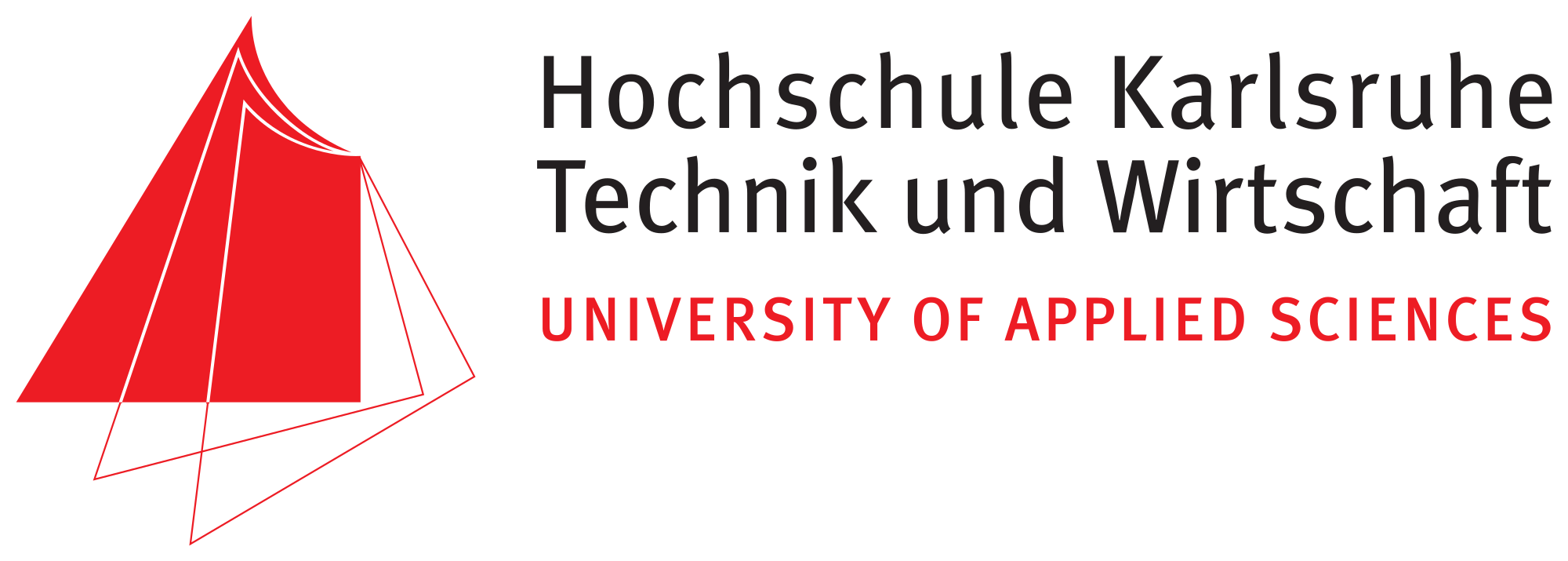|
Solution Components
| A Sub-Function: Power supply |
A.1 - Rechargeable Battery
| Advantages: |
Disadvantages: |
| It is portable which allow user to carry the
switched on system to anyway. |
The energy cannot last for long time. |
| It is still useable when blackout. |
It cannot be
used in the device with higher voltage. |
| |
|
| |
|
| |
|
A.2 - AC Plug-in
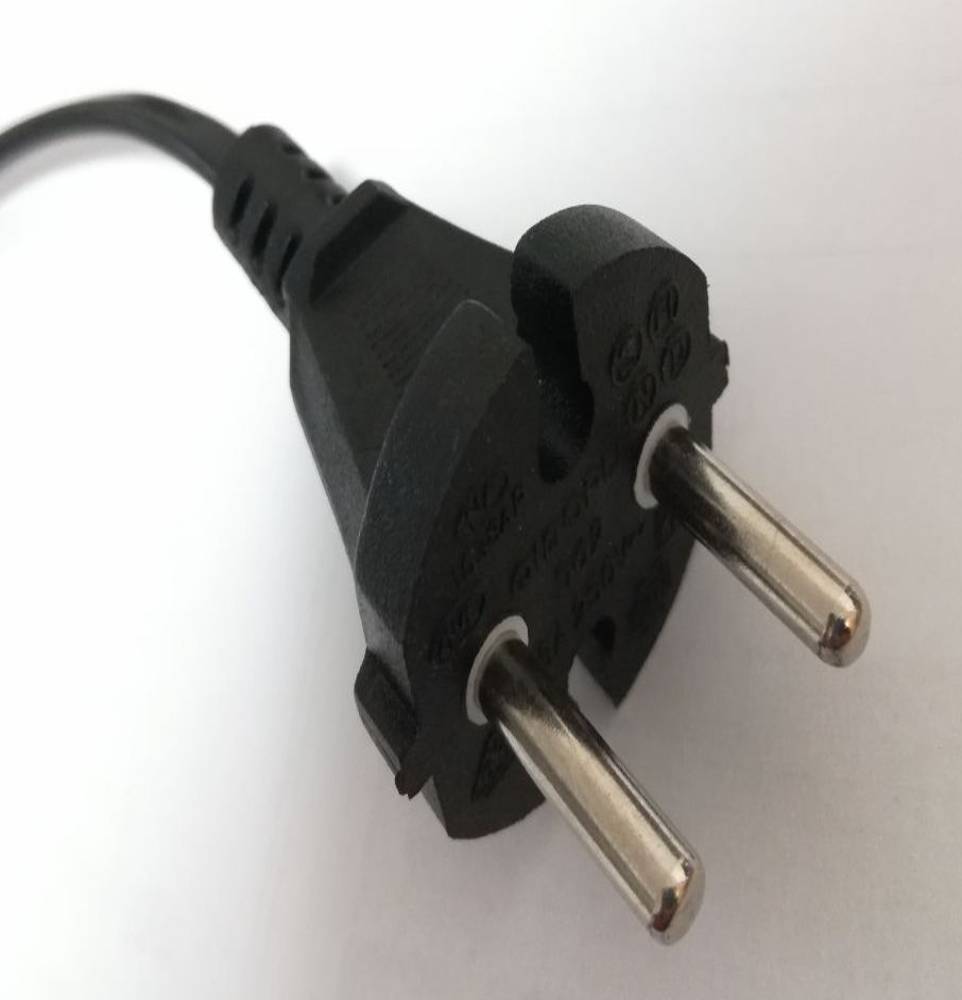 |
| Figure 3.4.1 : Type G
Plug |
| Advantages: |
Disadvantages: |
| The energy can last for long time. |
It cannot use when blackout. |
| It can be use
for the devices with higher power. |
It is not portable which user cannot carry to anywhere
when the device is on. |
| |
|
| |
|
| |
|
A.3 - DC Power Adapter
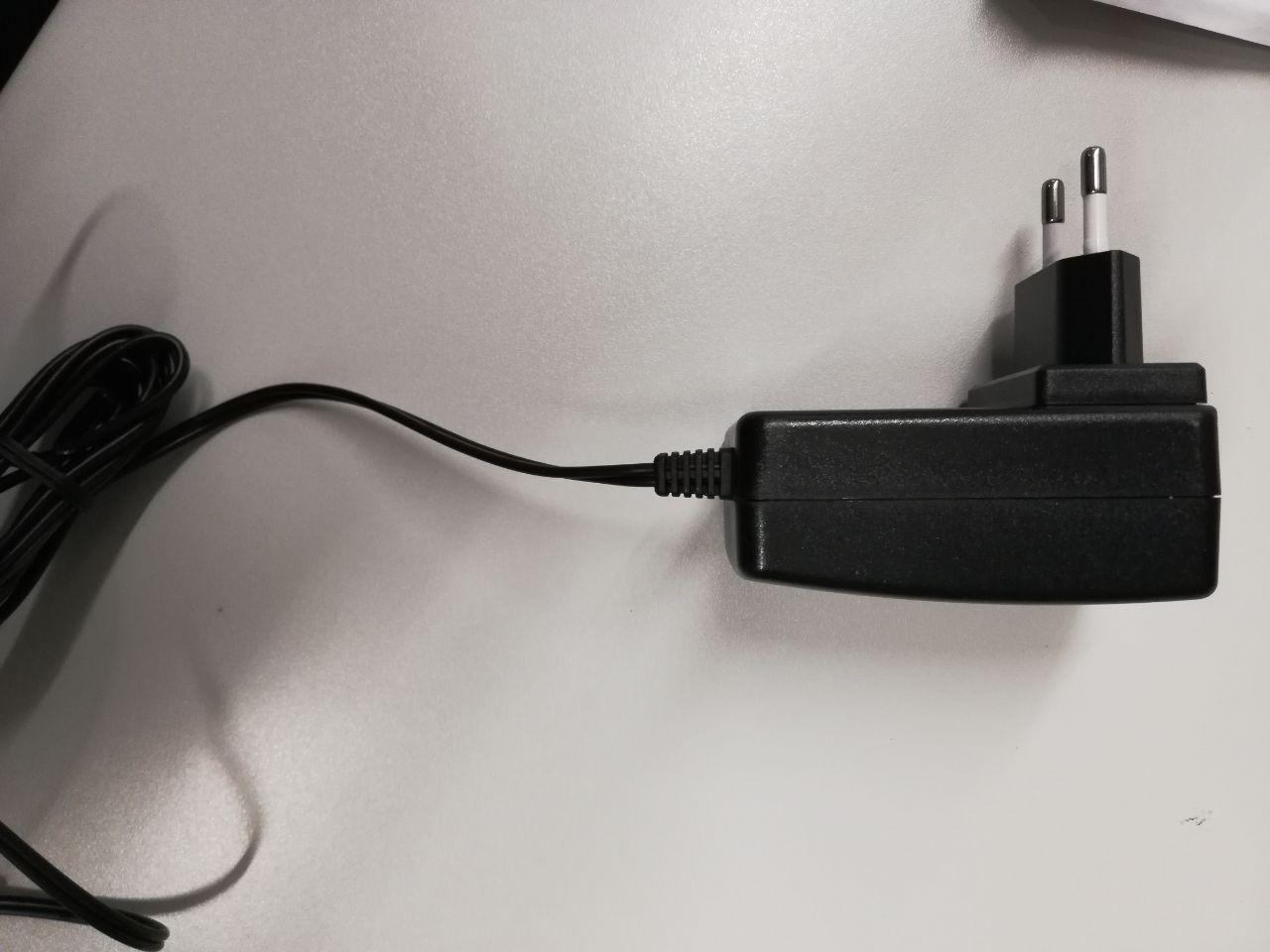 |
| Figure 3.4.2 : DC Power Adapter |
| Advantages: |
Disadvantages: |
| The energy can last for long time. |
It cannot use when blackout. |
| It can be use for the devices with DC power. |
It is not portable which user cannot carry to anywhere
when the device is on. |
| It is safer than AC power supply. |
|
| |
|
| |
|
| B Sub-Function: Brightness detect |
B.1 - BH1750 Light Intensity Sensor
|
|
BH1750 Light Intensity Sensor
[Source]
The BH1750 is one of the most advanced light intensity sensors that can be use to measure the light.
The output of this sensor is value of light in Lux (Lx), and this sensor can give an accurate output without making any calculation by user.
|
|
Maximum Voltage (Vmax) |
4.5 V DC |
| Operating Voltage (V) |
2.4 V ~ 3.6 V DC |
| Operating Temperature (°C) |
-40 °C to +85 °C |
| Range of Sensor (lx) |
1 lx to 65535 lx |
| Sensitivity (lx) |
High Resolution : 0.5lx ~ 1 lx
Low Resolution : 4lx |
| Cost (€) |
11.65 € |
| Advantages: |
Disadvantages: |
| It has high sensitivity. |
It has higher cost. |
| It has faster measure time. (High resolution: 120ms) |
It has smaller
range of operating temperature. |
| The Inter-
integrated Circuit (I2C) is available in this light intensity sensor. |
|
| |
|
| |
|
B.2 - Light Dependent Resistor Sensor Module (LDR Sensor Module)
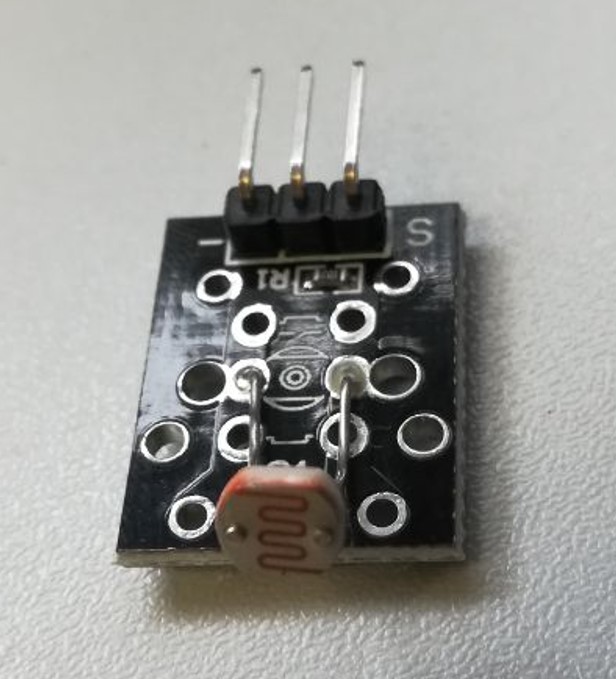 |
Figure 3.4.3 : Light
Dependent Resistor (LDR) Sensor
LDR sensor is a most popular and cheap light intensity sensor. Since the sensor's resistance varies with the amount of light falling on it, therefore this sensor is also known as the photoresistor.
|
| Maximum Voltage (Vmax) |
320 V |
| Operating Voltage (V) |
3.3 V ~ 5.0 V DC |
| Operating Temperature (°C) |
-60 °C to +75 °C |
| Dimension of Sensor |
5 mm |
| Range of Sensor (lx) |
0.1 lx to 10000 lx |
| Sensitivity (lx) |
Dark : 1M Ω (10000 lx)
Light : 1k Ω (1000 lx) |
| Cost (€) |
4.89 € |
| Advantages: |
Disadvantages: |
| It is low cost and easier to get this sensor. |
It has lower sensitivity because the resistance may vary significantly to temperature change. |
| It is easier to use. |
It is slower in response time (2 to 50ms). |
| It has wider range of operating temperature. |
|
| |
|
| |
|
| C Sub-Function: Motion detect:
|
C.1 - Passive Infrared Sensor (PIR Sensor)
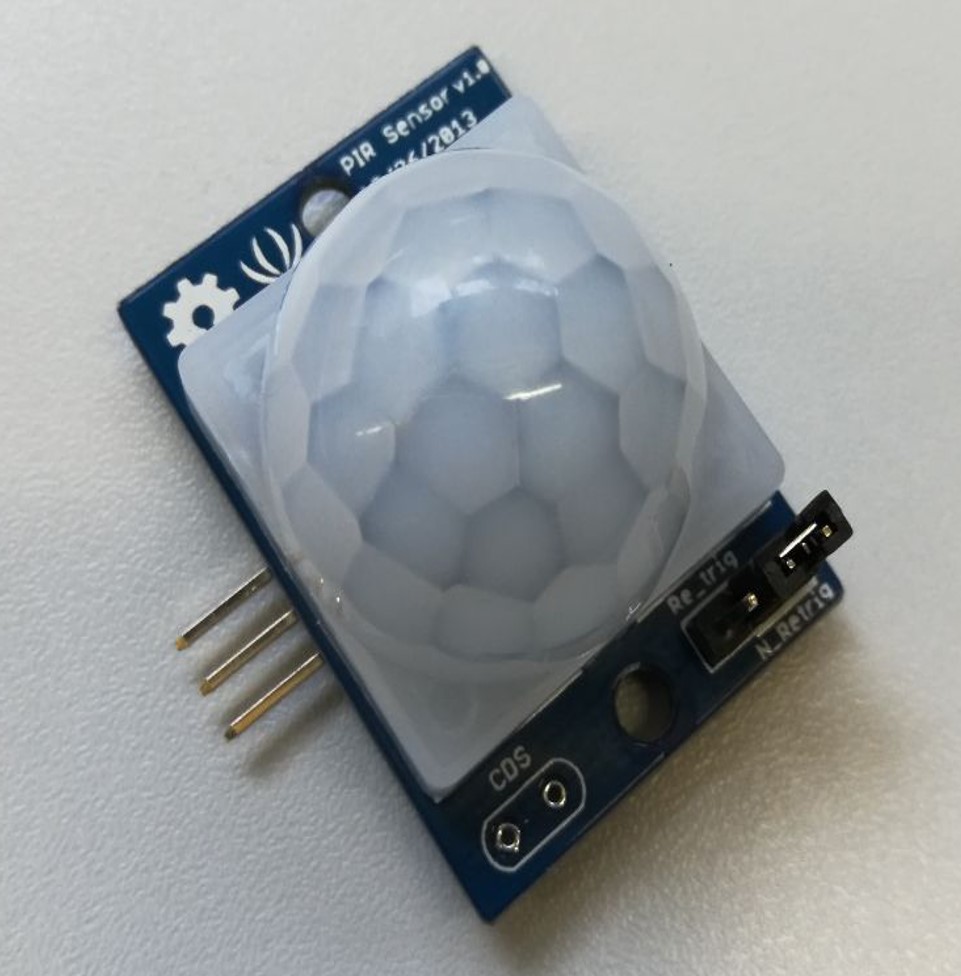 |
Figure 3.4.4 : Passive Infrared Sensor (PIR Sensor)
It is a sensor which can detect body heat and movement in the surroundings areas with its infrared energy. It is the most widely used motion in home security systems.
|
| Input Voltage (V) |
4 V ~ 12 V DC |
| Output Voltage (V) |
High level signal: 3.3 V
Low level signal: 0V |
| Power Consumption |
65m A |
| Operating Temperature (°C) |
-20 ° C to +85 °C |
| Dimension |
32 mm x 24 mm |
| Lens Size |
23 mm |
| Detecting Range
|
3 - 7 m |
| Detecting Angle |
120° |
| Delay time |
Adjustable (0.3 to 5 min) |
| Cost (€) |
2.80 € |
| Advantages: |
Disadvantages: |
| It consume not much energy and can last longer. (0.8W to1.0W) |
It is insensitive to very fast or very slow motion of objects. |
| It has larger fields of view and suitable for enclosed place. |
It does not work well in certain temperatures. |
| It is lower cost than other sensor. |
|
| |
|
| |
|
C.2 - Ultrasonic Motion Sensor
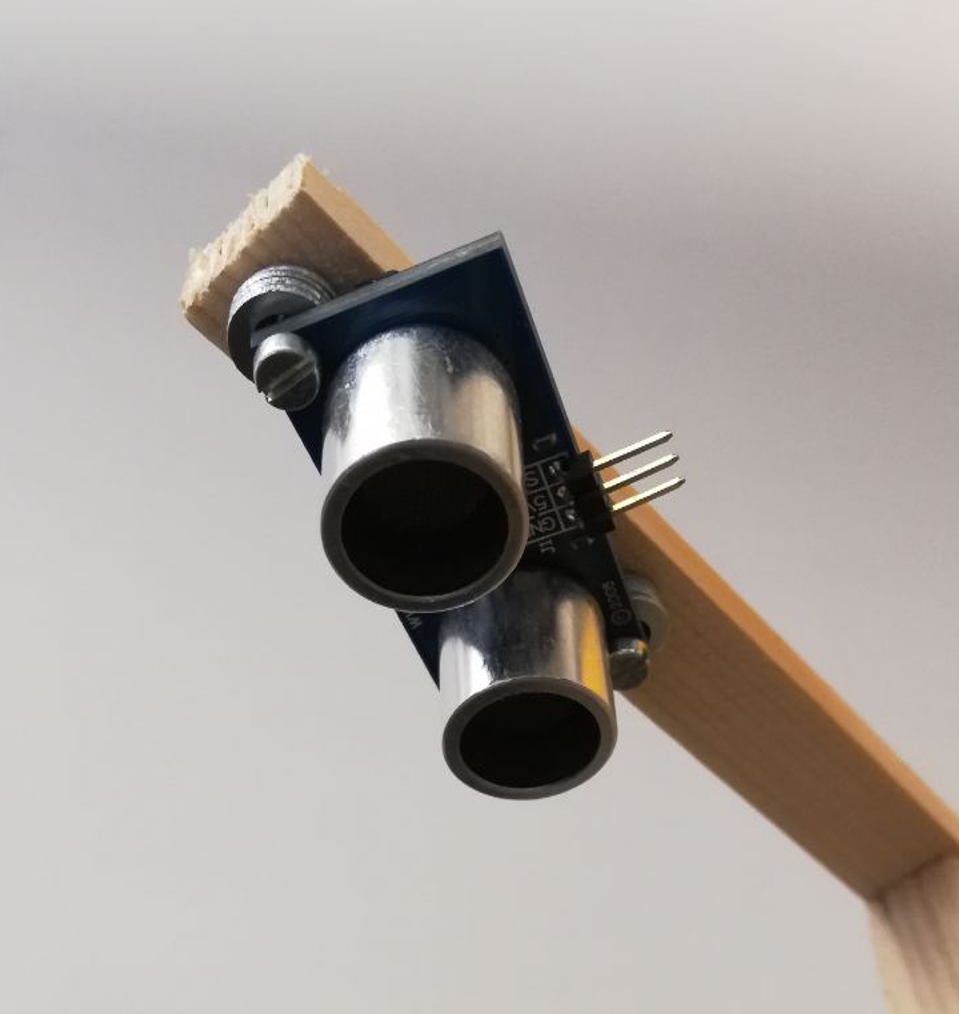 |
Figure 3.4.5 : Ultrasonic Motion Sensor
It can send out pulses of ultrasonic waves and measure the reflection of a moving object.
|
| Input Voltage (V) |
5 V DC |
| Output Voltage (V) |
High level signal: 5 V
Low level signal: 0V |
| Operating Temperature (°C) |
-15 ° C to +70 °C |
| Dimension |
45 mm x 20 mm x 15 mm |
| Detecting Range
|
0.02 - 4 m |
| Detecting Angle |
15° |
| Speed of Detection |
340 m/s |
| Cost (€) |
3.99 € |
| Advantages: |
Disadvantages: |
| It is sensitive to minor motions. |
It is very expensive. |
| It can sense all the material types but not affected by atmospheric dust, rain and snow. |
Its "false alarm" rate is higher than other motion sensor. |
| It has higher sensing distance. |
Its sensitivity is vary in different temperature. |
| |
It has difficulties in reading the reflections from soft, curved, thin and small objects. |
| |
|
C.3 - Microwave Sensor
|
|
Microwave Sensor
[Source]
It can send out microwave pulses and measure the reflection of the moving objects. This sensor can cover a larger area than infrared sensors but it's more expensive than other motion sensors.
|
| Input Voltage (V) |
4.0 V - 28.0 V DC |
| Output Voltage (V) |
3.2 V - 3.4 V |
| Power Consumption |
20m W |
| Operating Temperature (°C) |
-20 ° C to +80 °C |
| Dimension |
35.9 mm x 17.3 mm x 0.68 mm |
| Detecting Range |
5 - 9 m |
| Detecting Angle |
360° |
| Delay time |
5 seconds to 25 minutes |
| Cost (€) |
1.99 € |
| Advantages: |
Disadvantages: |
| It is a very sensitive sensor. |
It will false detect the non-metallic objects as moving object outside the target range. |
| It has wide coverage range. |
It will consume a lot of power. |
| |
|
| |
|
| |
|
| D Sub-Function: User react
|
D.1 - Web Browser
 |
Figure 3.4.6 : Web Browser
Web Browser is not only a search engine, it is also the application for user to access information on the web around the world.
|
| Advantages: |
Disadvantages: |
| It will be available for both iOS user and Android user. |
Internet is required to open the webpage. |
| User do not need to download specific apps because the web page can be access in any web browser such as Google Chrome, Firefox, Internet Explorer, Opera, Microsoft Edge and so on. |
|
| |
|
| |
|
| |
|
| E Sub-Function: Signal receive
|
E.1 - ESP 32
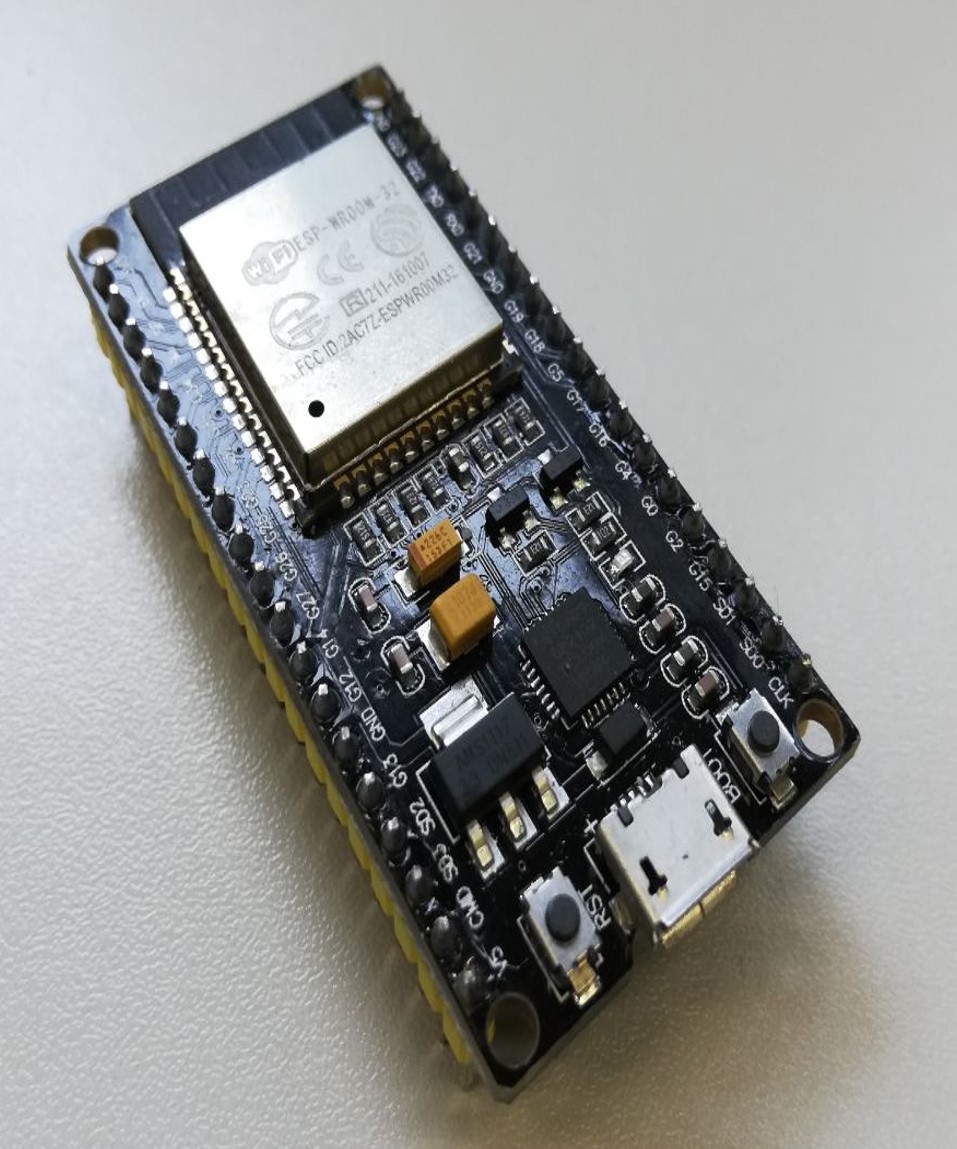 |
Figure 3.4.7 : ESP 32
ESP32 is a microcontroller which integrated with a single 2.4 GHz Wi-Fi and Bluetooth chip. It can be programmed by using Arduino Uno IDE.
|
| MCU |
Dual- or single- core Xtensa® 32-bit LX6 Microprocessors |
| Wi-Fi |
802.11 b/g/n HT40 |
| Bluetooth |
Bluetooth 4.2/BLE |
| Memory |
512kB SRAM & 16MB Flash |
| Operating Temperature (°C) |
-40 ° C to +125 °C |
| Digital I/O-Pins |
32 |
| Cost (€) |
7.99 € |
| Advantages: |
Disadvantages: |
| It is the cheapest IOT Wi-Fi and Bluetooth built-in module. |
|
| It is much more powerful than ESP8266 which it contains more GPIOs with multiple functions, faster Wi-Fi, and also Bluetooth. |
|
| It is easier to program, which it can use Arduino language to program it. |
|
| |
|
| |
|
| F Sub-Function: Light switch
|
F.1 - AC Dimmer Module
|
|
AC Dimmer Module
[Source]
AC Light Dimmer Module is a module which can be control by our microcontroller to adjust the brightness of AC light.
It is designed to control the alternating current voltage, which can transfer current up to 600V / 16A. It can also be used in fans, pumps, air cleaners and so on.
|
| Power |
600 V - 16 A |
| AC Frequency |
50 / 60 Hz |
| Load |
Normal: 2A ;
Peak: 5A |
| Logic Level |
3.3 V / 5 V |
| Signal Current |
> 10 mA |
| Operating Temperature (°C) |
-20 ° C to +80 °C |
| Cost (€) |
8.08 € |
| Advantages: |
Disadvantages: |
| The system can be control automatically or manual by
user through browser. |
It has higher cost. |
| The system can be control not only by on and off, but also can be adjusted for its performance
by AC Light Dimmer Module. |
It can use
Pulse Skip Modulation. However, it is not a good way to dim
lights as there is a chance of flickering. |
| |
|
| |
|
| |
|
F.2 - Relay Module
 |
Figure 3.4.8 : Relay Module
Relay module is a electromagnetic switch module which can control on and off of the system. It is used in the application to turn on and off a circuit with low power signal.
|
| Maximum Load |
250 V - 10 A |
| Logic Level |
3.3 V |
| Max.
ON/OFF Mechanically Switching |
300
operation/min |
| Max.
ON/OFF Electrically Switching |
30
operation/min |
| Operating Temperature (°C) |
-25 ° C to +70 °C |
| Cost (€) |
2.15 € |
| Advantages: |
Disadvantages: |
| The system can be control automatically or manual by
user through browser. |
The system can
only be control by on and off, but cannot be adjusted for
its performance. |
| It has lower cost. |
Its parts can
wear out as the switch contacts become dirty, as high
voltage and current cause sparks between contacts. |
|
It has wider range for Output Voltage. (up to 250 V AC) |
It cannot be switched on and off at high speeds because it
has slow response and the switch contacts will rapidly wear
out due to the sparks. |
| |
|
| |
|
F.3 - Mosfet Driver Module
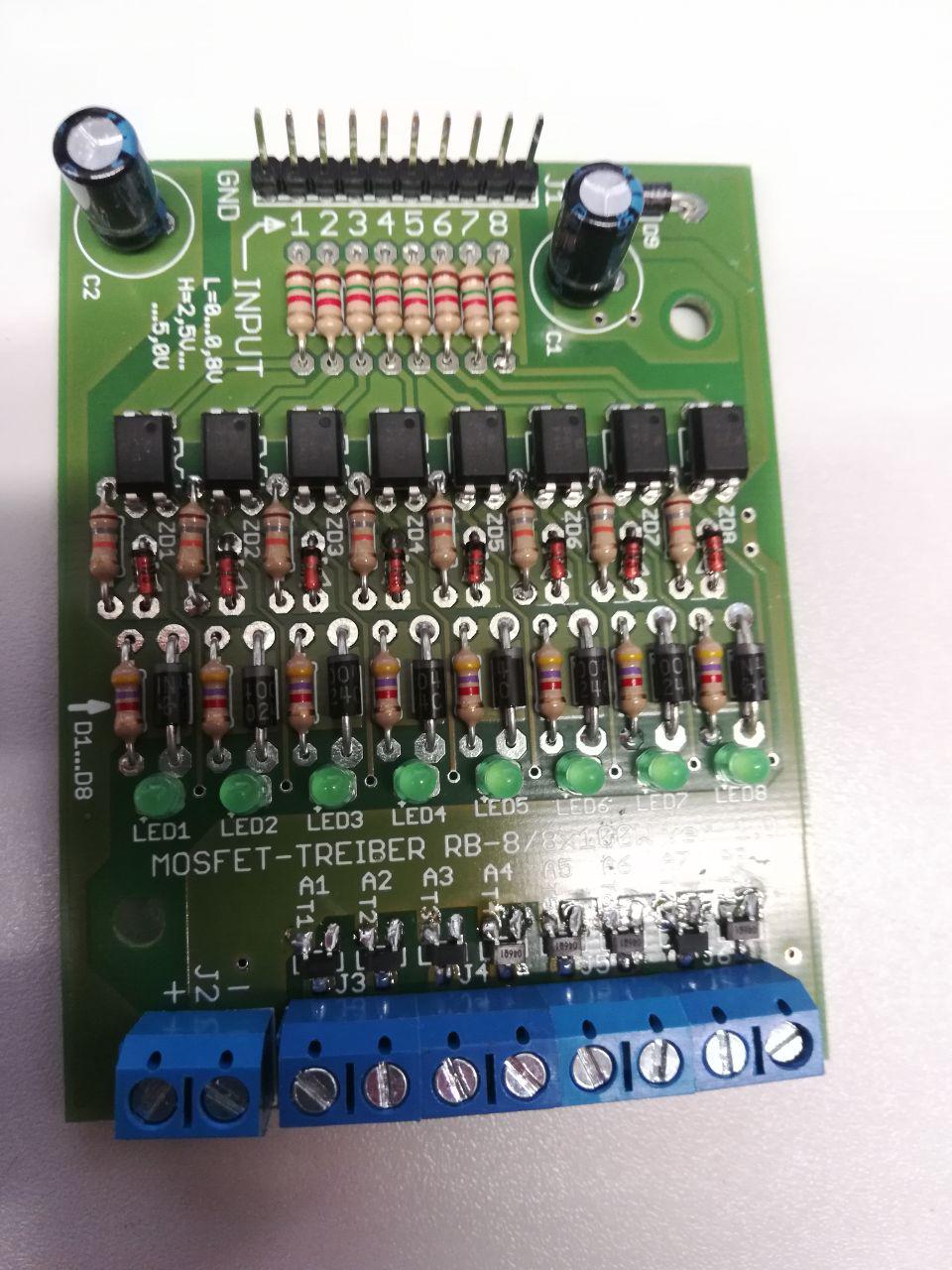 |
Figure 3.4.9 : Mosfet Driver Module
Mosfet driver module is a power amplifier that accepts a low power input from our microcontroller to control a high power output which is our actuator.
This device can also be called as optocoupled gate driver.
|
| Load |
9 V to 24 V |
| Logic Control (Input) |
Low-Output : 0 V to 0.8 V
High-Output : 2.5 V to 5 V |
| Temperature (°C) |
40 ° C |
| Cost (€) |
5.95 € |
| Advantages: |
Disadvantages: |
| The system can be control automatically or manual by
user through browser. |
It has smaller
range for output voltage. ( up to 24V DC) |
| It is
necessary to keep switching time as short as possible, which
it will switch at higher frequencies. |
|
|
| It is a
electronic switches for controlling load. This will reduced
the sparks appear between contacts. |
|
| |
|
| |
|
| G Sub-Function: Data transmit
|
G.1 - Wi-Fi
| Advantages: |
Disadvantages: |
| It allows long range communication between devices. Therefore, user can control their devices at anywhere of the world. |
If there is no internet connection, user cannot get the information . |
| |
|
| |
|
| |
|
| |
|
G.2 - Wi-Fi & Bluetooth
| Advantages: |
Disadvantages: |
| When there is no internet connection, user can also get the information by bluetooth. |
Bluetooth will be redundant connection if the Wi-Fi is connected. |
|
It only allows short range communication between devices. |
|
|
| |
|
| |
|
| H Sub-Function: Status display
|
H.1 - OLED & Web Browser
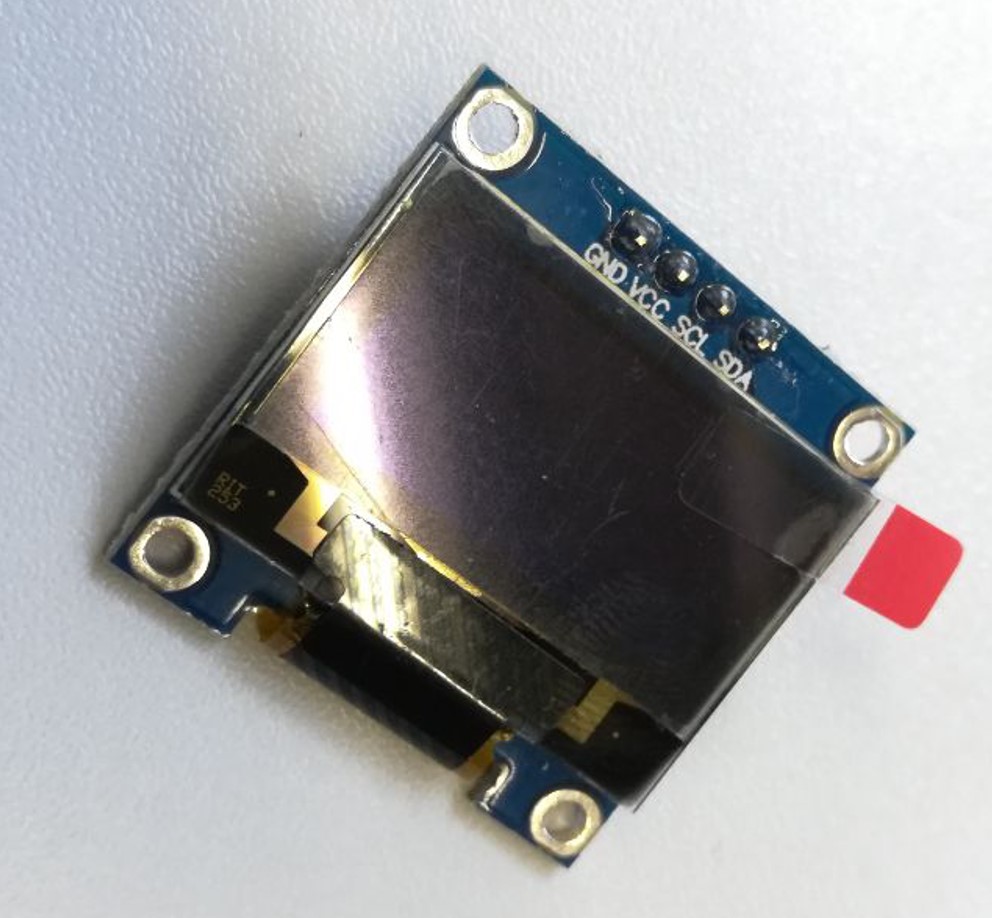 |
Figure 3.4.10 : OLED Display
|
| Advantages: |
Disadvantages: |
| User can get the informations not only from the web browser, but also from the OLED display. |
OLED will
consume bigger space of the device. |
| User can get the informations without handphones, PC or tablets. |
Redundant
information which appear in both OLED display and web
browser. |
| |
|
| |
|
| |
|
H.2 - Web Browser
| Advantages: |
Disadvantages: |
| User can get the informations from anywhere around the world. |
User cannot get the informations without handphones, PC or tablets. |
|
This can save more space on the devices. |
|
| There will no
redundant information which appear in both OLED display and
web browser. |
|
| |
|
| |
|
| I Sub-Function (Additional Home Automation Control Function): Temperature Detect
|
I.1 - DHT22 AM2302 Temperature and Humidity Sensor
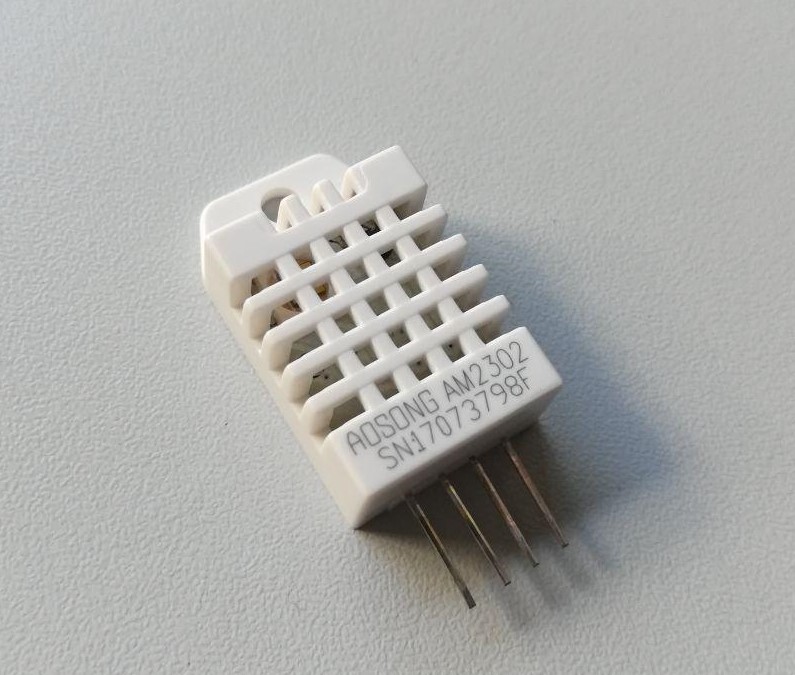 |
Figure 3.4.11 : DHT22 AM2302 Temperature and Humidity Sensor
DHT22 is a capacitive type humidity and temperature sensor. The digital signal is fairly easy to be read by using any microcontroller such as ESP 32.
|
| Operating Voltage (V) |
3.3 V ~ 6 V DC |
| Operating Temperature (°C) |
-40 °C to +80 °C |
| Operating Humidity (%RH) |
0 %RH to 100
%RH |
| Output
Signal |
Digital signal
via single bus |
|
Sensing Element |
Polymer
Capacitor |
|
Sensitivity |
Humidity :
0.1%RH
Temperature : 0.1°C |
|
Sensing Period |
Average 2s |
| Dimensions |
Small size :
14mm x 18mm x 5.5mm
Big size : 22mm x 28mm x 5 mm |
| Cost (€) |
4.99 € |
| Advantages: |
Disadvantages: |
| It has high
accuracy with humidity +-2%RH (Max +-5%RH) and temperature
<+-0.5°C |
It has limited
long term stability. |
| It does not
need any maintenance for longer periods. |
It is
sensitive to dewing and certain aggresice substances. |
| It can not
only measure temperature, but also the humidity of the
surrounding. |
|
| |
|
| |
|
I.2 - MCP 9808 I2C Temperature Sensor
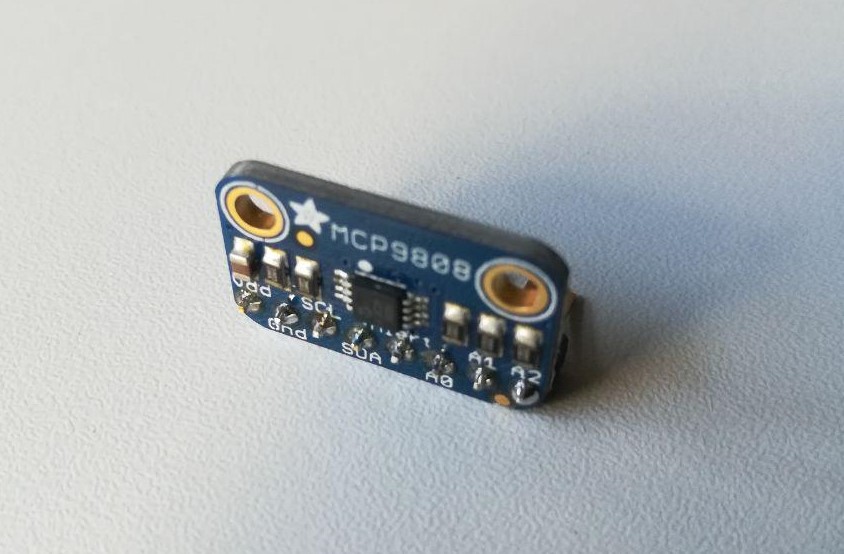 |
Figure 3.4.12 : MCP9808 I2C Temperature Sensor
MCP9808 I2C temperature sensor is the one of the more
accurate digital temperature sensor. It use the standard i2c
to work with any microcontroller suc as ESP 32.
|
| Operating Voltage (V) |
2.7 V ~ 5.5 V DC |
| Operating Temperature (°C) |
-40 °C to +125 °C |
| Operating Current |
200 μA |
|
Sensitivity |
0.0625 °C |
| Cost (€) |
8.52€ |
| Advantages: |
Disadvantages: |
| It has wider
range of operating temperature, up to 125 °C. |
It only can
measure the temperature. |
|
It is more sensitive and precise compare to other
temperature sensor up to 0.0625 °C. |
It is more expensive than other temperature sensor. |
| |
|
| |
|
| |
|
|
